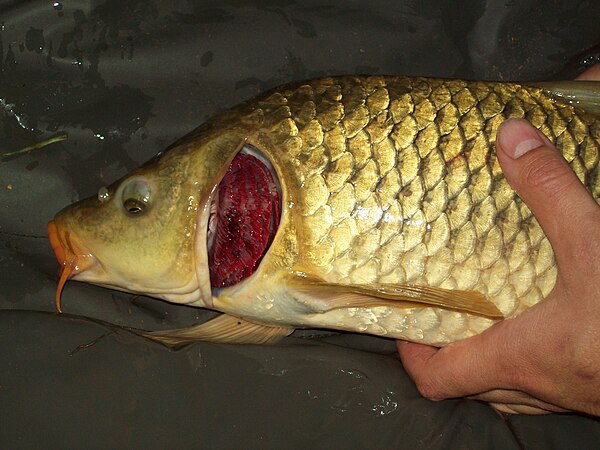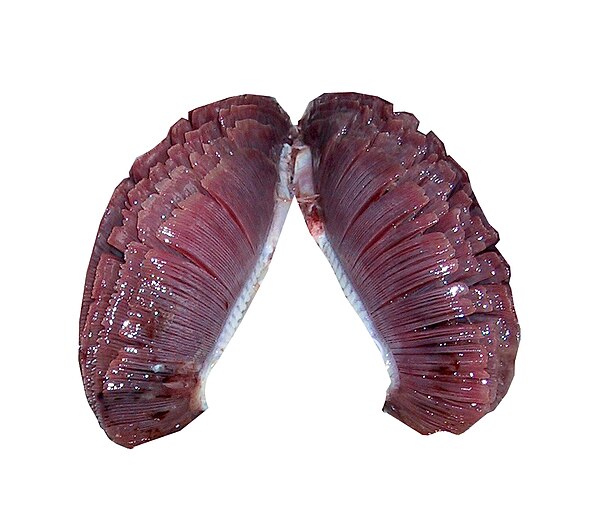Gas exchange
Videos
Page
Gas exchange is the physical process by which gases move passively by diffusion across a surface. For example, this surface might be the air/water interface of a water body, the surface of a gas bubble in a liquid, a gas-permeable membrane, or a biological membrane that forms the boundary between an organism and its extracellular environment.

Fig. 2. A comparison between the operations and effects of a cocurrent and a countercurrent flow exchange system is depicted by the upper and lower diagrams respectively. In both it is assumed (and indicated) that red has a higher value (e.g. of temperature or the partial pressure of a gas) than blue and that the property being transported in the channels therefore flows from red to blue. Note that channels are contiguous if effective exchange is to occur (i.e. there can be no gap between the channels).

Fig. 6. A diagrammatic histological cross-section through a portion of lung tissue showing a normally inflated alveolus (at the end of a normal exhalation), and its walls containing the alveolar capillaries (shown in cross-section). This illustrates how the alveolar capillary blood is completely surrounded by alveolar air. In a normal human lung all the alveoli together contain about 3 liters of alveolar air. All the alveolar capillaries contain about 100 ml blood.

Fig. 7. A highly diagrammatic illustration of the process of gas exchange in the mammalian lungs, emphasizing the differences between the gas compositions of the ambient air, the alveolar air (light blue) with which the alveolar capillary blood equilibrates, and the blood gas tensions in the pulmonary arterial (blue blood entering the lung on the left) and venous blood (red blood leaving the lung on the right). All the gas tensions are in kPa. To convert to mm Hg, multiply by 7.5.

Fig. 8. Gills of tuna showing filaments and lamellae
Gill
Videos
Page
A gill is a respiratory organ that many aquatic organisms use to extract dissolved oxygen from water and to excrete carbon dioxide. The gills of some species, such as hermit crabs, have adapted to allow respiration on land provided they are kept moist. The microscopic structure of a gill presents a large surface area to the external environment. Branchia is the zoologists' name for gills.

The red gills of this common carp are visibly exposed as a result of a gill flap birth defect.

Freshwater fish gills magnified 400 times

The red gills inside a detached tuna head (viewed from behind)

An alpine newt larva showing the external gills, which flare just behind the head